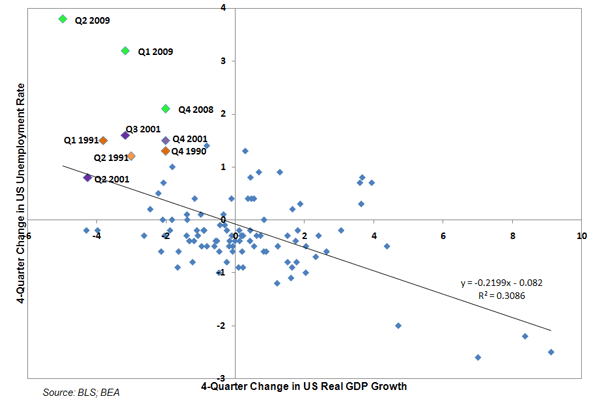
This implies that quantity supplied of the commodity at each price will decrease as shown by the shift of the supply curve to the left. First, the law of supply assumes that firms operate in a competitive market structure and no individual firm has a monopoly over the production of the commodity. The higher, price cost per unit of a product output makes it more profitable to expand more output and offer more quantity of the product for sale in the market. Thus, the high price of a product serves as an incentive for the producer to produce more of it. The higher the price, the greater the incentive for the firm to produce and supply more of a commodity in the market, other things remaining the same.
Supply curve is therefore, a graphic representation of what quantities of a good will are offered for sale at all possible prices. Supply curve depicts the sellers’ quantity reactions to various prices. Thus the quantity supplied, like the quantity demanded, is a function of price. The cost of production increases due to increase in quantity supplied. It is
necessary to increases price to maintain or increase the level of profit. Therefore, there is a direct relationship between price and quantity supplied.
Law of Demand Curve/Diagram
If better
methods of production are invented, profit increases at the previous price. The law of supply shows the positive relationship between the price of the commodity and the quantity supply of a commodity. The upward slope of the supply curve is supported by the following factors.
SI-BONE, Inc. (NASDAQ:SIBN) Q2 2023 Earnings Call Transcript – Yahoo Finance
SI-BONE, Inc. (NASDAQ:SIBN) Q2 2023 Earnings Call Transcript.
Posted: Wed, 09 Aug 2023 14:07:09 GMT [source]
In the figure above OX axis shows quantity of demand and OY axis shows price. SS1 line is the line of supply when the price of the commodity is OP then quantity of supply is OQ. This law can be explained with the help of a supply schedule as well as by a supply curve based on an imaginary figures and data. The law of supply does not apply to precious, rare, or artistic items. For example, even if the price increases, the number of rare items like the Mona Lisa artwork cannot be increased.
The Law of Supply: Explanation, Assumption and Exception
On the other hand, as price fall, supply also declines since low price result in lower profit margins. The law supply is a law that states that the supply of goodwill increase as its price decreases. In other words, when the price of a good goes down, the quantity supplied will go up. This law is based on the assumption that producers are eager to make a profit and will produce more of a product if they can sell more of it for less money.
- It must be noted that the form of the supply function refers to the precise quantitative relation between the independent variables such as the own price of the commodity X and prices of factors such as F1, F2 etc.
- The law of supply states that the relationship between price and supply of a product.
- Otherwise, a reduction in transport price implies reducing the cost of production, in order that extra might be provided even at a lower price.
- The basic aim of producers, while supplying a commodity, is to secure maximum profits.
The supply depends on the demand response of the consumers and the revenue generated from sold goods. The law of supply says that as the price of an item goes up, suppliers will attempt to maximize their profits by increasing the number of items for sale. It is the situation in the economy in which all the economic activities like production, employment, consumption, investment, etc. decrease sharply. So, the suppliers supply more even at a low price due to fear of further fall in the price due to the worse condition in the economy. If the business firm needs a large amount of liquidity or cash, it may sell a large amount of the product lowering the price. If the business firm has to close its old business to start the new one, it has to clear all the stocks of goods.
Understanding the Law of Supply
In other words the quantity supplied changes directly with price. The law explains a definite relationship between the prices of a commodity and its quantity supplied. In the above figure, the upward sloping line represents the supply line or supply curve of the firm. Different five combinations of price-quantity in the figure show price in the market and corresponding quantity supply of the product.
Fourth, for the law of supply to hold it is assumed that technology or input prices remain constant when price of a good rises. If there is improvement in technology or fall in input prices when firms expand their output, then more supply of the product may be made at a lower price. The law of supply relates to this functional relationship between price of a commodity and its supply. In contrast to the inverse relationship between the quantity demanded and the changes in price, the quantity supplied generally varies directly with price. That is, the higher the price, the larger is the quantity supplied of a commodity.

Under this situation and circumstances, more of the product in consideration may not be supplied, despite the rising prices. With the improvement in technique if the cost of production is reduced, the seller would supply more even at falling prices. It suggests with the supply schedule, that the market supply tends to expand with the rise in price and vice-versa. Similarly, the assumptions of law of supply upward slopping curve also depicts a direct co-variation between price and supply. The supply of a commodity in the market at anytime is also determined by sellers’ expectations of future prices. If, as happens during inflationary periods, sellers expect the prices to rise in future, they would reduce supply of a product in the market at would instead hoard the commodity.
Explanation and example of law of diminishing marginal utility
As shown by the arrow marks, at each price such as P1, P2, P3, the quantity supplied on the supply curve S”S” has declined as compared to the supply curve SS. So far as short-run supply curve of the industry under perfect competition is concerned, it is a mere lateral summation of the supply curves of the firms. On the other hand, if on the expansion of industry external economies outweigh the external diseconomies, the industry will be decreasing-cost industry and its long-run supply curve will be downward sloping. As a consequence, in case of decreasing-cost industry in the long-run more will be supplied at a lower price.
In this diagram price is taken on Y axis and quantity supplied is measured on X axis. Answer is simple, lets SS is a supply curve slope upward from left to right because a direct relationship between price and quantity supplied. It is because of the relationship between price of a commodity and its quantity supplied. In the law of supply “other things remaining the same” is an important statement. It means all the factors except price which can occur change in supply. It is assumed that the price of the product changes, but there is no change in the cost of production.
Backward slopping supply curve BS ‘ part represents supply curve is bending at B. This curve is also known as an “Exceptional Supply Curve” as such a thing happens only in some exceptional cases like—labour supply or savings. Alternatively, it can lease greater employees and growth the supply of bread. Or, in some instances, the store may additionally grow charges and use those more income to put money into a new bread maker.
In such cases, the supply of a product falls with the increase in price of a product at a particular point of time. Refers to a supply schedule that represents the different quantities of a product supplied by an individual seller at different prices. The law of supply reflects the general tendency of the sellers in offering their stock of a commodity for sale in relation to the varying prices. The law of supply is not valid if sellers expect a fall in the price in the future. The sellers will be willing to sell more in this situation, even at a cheaper price.

If there is a tendency of increasing prices at present period, the sellers
increase quantity supplied for the lust of profit. Now they want to maximize their profit due to good
present circumstances. According to the law of supply, the quantity supplied increases with a rise in the price of a product and vice versa while other factors are constant. The other factors may include customer preferences, size of the market, size of population, etc.
The hoarding of huge quantities of goods by traders is an important factor in reducing their supplies in the market and thus causing further rise in their prices. There is, however, an important difference between the reaction of quantity supplied and that of quantity demanded to changes in price of a good. As demand is defined as a schedule of the quantities of good that will be purchased at various prices, similarly the supply refers to the schedule of the quantities of a good that will be offered for sale at various prices. To be more correct, supply of a commodity is the schedule of the quantities of a commodity that would be offered for sale at all possible prices during a period of time, for example, a day, a week, a month and so on.
- It is a qualitative statement, as it indicates the direction of change in the quantity supplied, but it does not indicate the magnitude of change.
- If Monsoon comes in time and rainfall is adequate, there are bumper crops, the supply of agricultural products increases.
- The slope of market supply curve can be obtained by calculating the supply of the slopes of individual supply curves.
- For example, the rise in the price of onion will motivate the farmers to produce more quantity of onion in place of potato and other vegetables.
If there is an increase in tax rates, then the supply of product would decrease even at the higher price. Therefore, for the application of law of supply, it is necessary that government policies should remain constant. Further, the law assumes that there are no changes in the prices of other products. If the price of some other product rises faster than that of the product in consideration, producers might transfer their resources to the other product—which is more profit yielding due to rising prices.